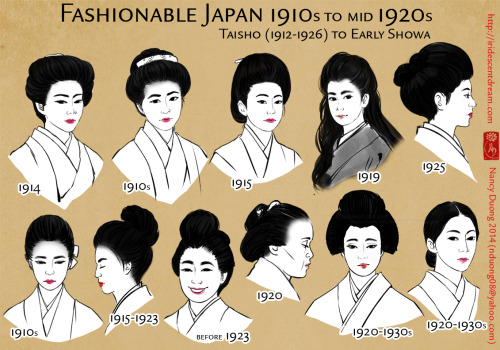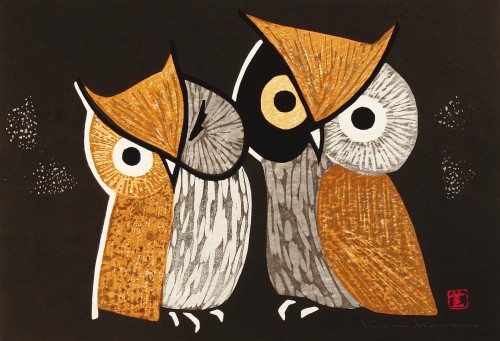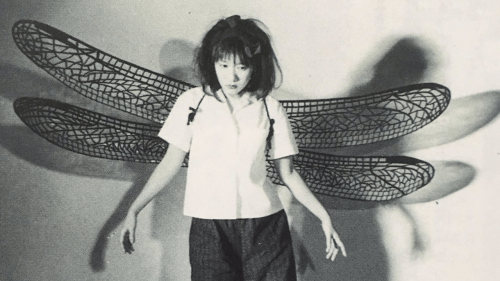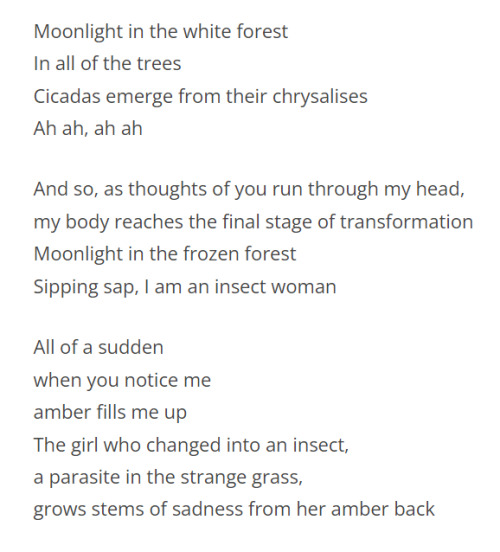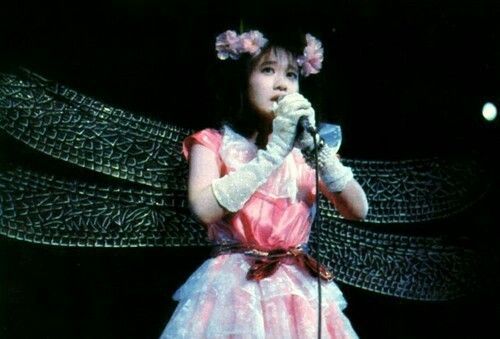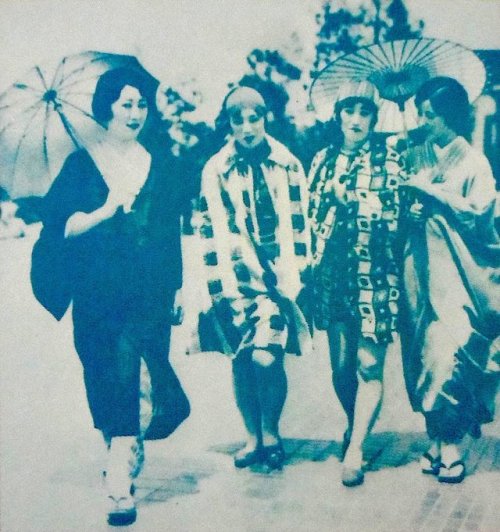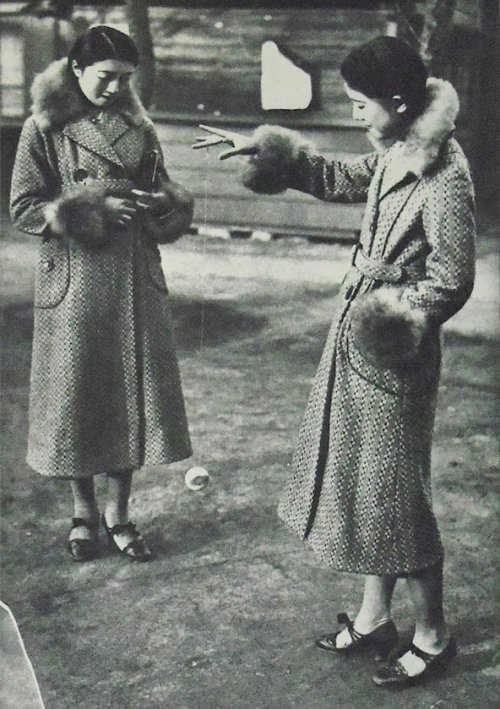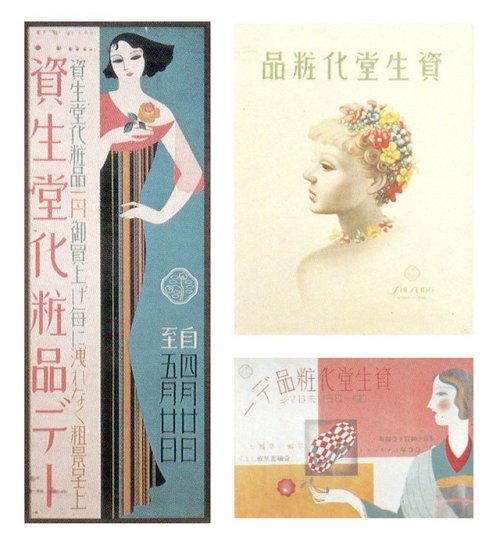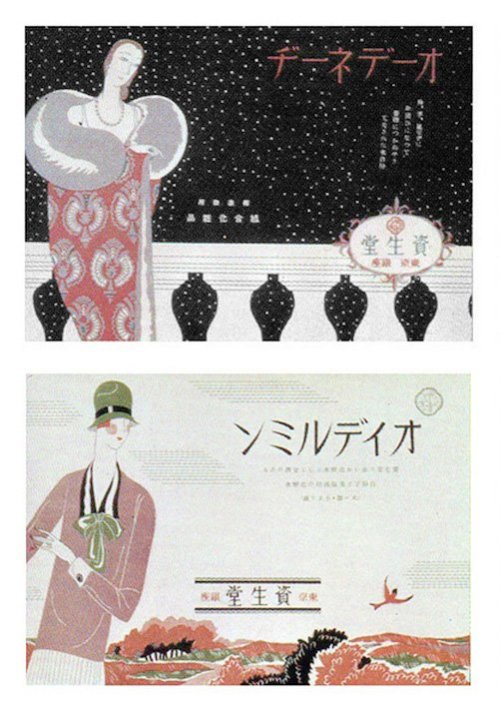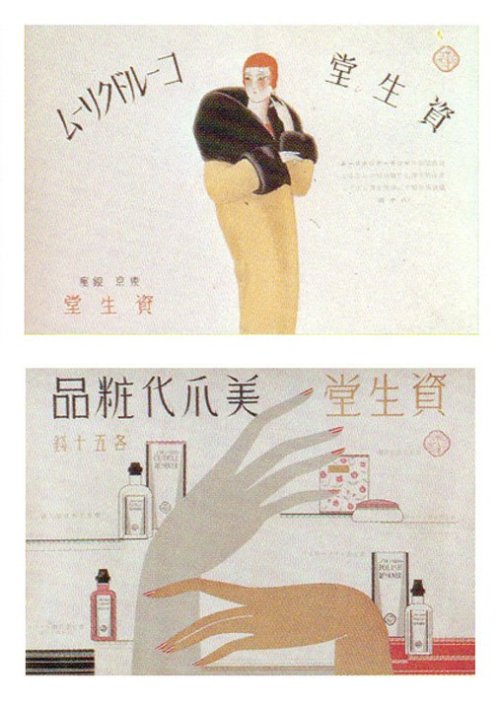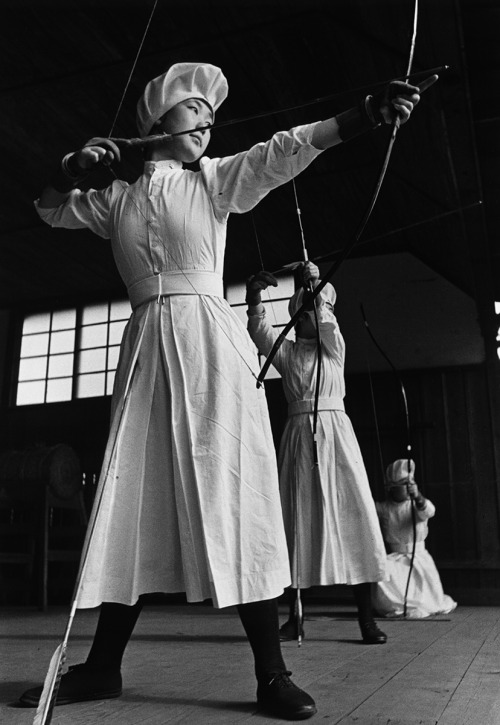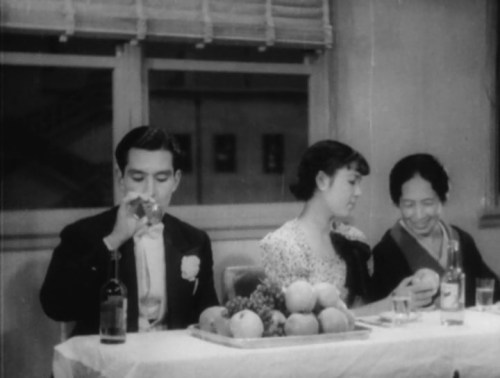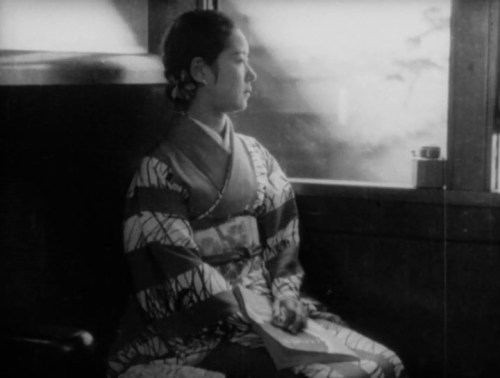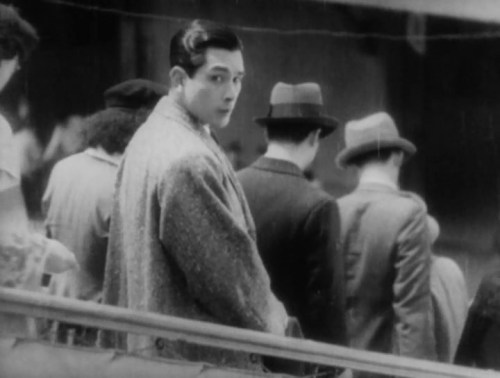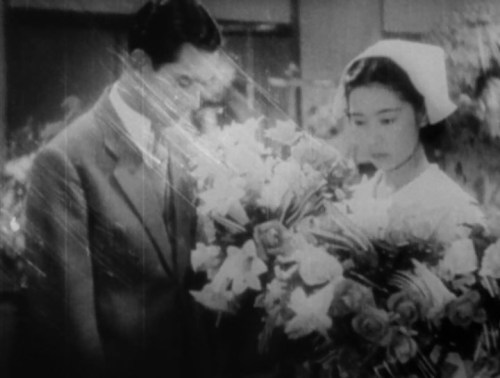#showa era
New Years at Grandma’s Place, mid-late 60s
Photo of little Miss Sasamoto by Mama Sasamoto with Papa’s “German” camera.
(Upper-middle class to upper class, Showa era.)
The glossy fan-shaped object just barely visible in the rear, is a“sarunokoshikake,” which is a type of mushroom (polyporaceae). This one was huge and was apparently very valuable at the time and more so today. I have been trying to research it, but the most I have learned is that It was used as an ornament throughout the year. It was also used in traditional medicine.
In the background on the short table in the tokonomaiskagamimochi, a traditional Japanese New Year decoration with two rice “cakes” (mochi) and a bitter orange on top. This one also has a skewer of dried persimmons on top of it. The dark object on top of all and in front of the scroll is daikokuten, the god of wealth. The scroll, kakejiku, varied by season. The fan shaped object on the right is not related to New Years, but is a sort of dried mushroom (sarunokoshikake) used as an expensive decoration.
Photo of by Mama Sasamoto, taken sometime in the mid 1960s at grandma’s house in Odawara, Kanagawa Prefecture.
(Scanned from an old print.)
Post link
Stunning handpainted [antique] blue and white Japanese porcelain plate. It is estimated to be from the Late Taisho-Early Showa period, circa 1920s. Adorned with a graceful pattern of stylized Kikumon (chrysanthemum) and waves. The mark on the underside indicates the name of shop (not listed in any references that I checked). It was likely produced in Seto.
Post link
This is a hairstyle timeline that is meant to cover the Taishō era (1912-1926). However the dates for many reference photographs were rather vague, so some might actually fall into Shōwa era (1926-1989). Regrettably I couldn’t cover EVERY single hairstyle from this period so please consider this to be a brief overview. There are no Geisha, Maiko, etc featured here; they will be covered in another fashion timeline someday.
Some interesting notes about Meiji-Taisho era from Liza Crihfield Dalby’s Kimono: Fashioning Culture(1993)
· “Men and women of Meiji had gulped up Western culture with all the indiscriminate enthusiasm of new converts. By Taishō, Japanese sensibilities vis-à-vis the West were much smoother. This was Japan’s political equivalent of the … social scene of the American Roaring Twenties. Japanese born during Taishō would enter adolescence as modern boys and girls. Significantly, women opened their closets to Western clothing during this decade. Kimono has lost space ever since.” (pg. 124)
· “By 1915 Japan was beginning to feel itself a world-class nation, more confident of its military strength and social development. Ordinary Japanese were inclined to look at their society in light of how life might be bettered by adapting foreign ideas, or made more interesting by acquiring foreign fashions. Borrowing from the West was of course not new, but it had now become a more reciprocal and respectable process.” (pg. 124)
WOMEN’s HAIR:
· In the Meiji era “a few women cropped their hair, but these courageous souls were simply regarded as weird” and indecent (pg. 75)
· “If cutting the hair short was too radical [in Meiji Japan], as public reaction attests, women’s hair did gain a new option in the sokugami style, a pompadour resembling the chignons worn by Charles Dana Gibson’s popular Gibson girls. The further the front section, or ‘eaves,’ of the hair protruded, the more daring the style. The sokugami style bunched the hair, coiling it in a bun at the crown of the head. Unlike traditional coiffures, sokugami did not require the heavy use of pomade, pins, bars, strings, and false hair to hold its shape. Its appeal was promoted as healthier and more rational – hence, more enlightened- than the old ways.” (pg. 75)
Post link
A novel, of memorable liquor store and logging railroad 17

Kurijima River at typhoon 2018 2018年の台風時の栗島川
「ここにいては危険だ。少しでも高いところに逃げよう。津島神社が良い」 正之さんは言った。
車軸を流すがごとき大雨である。加えて、立っていられないほどの強風。そして停電。真っ暗闇の中、耳を聾するばかりの川の音がする。子供たち4人を抱えて、無事に神社までたどりつけるだろうか? 我が家からわずか80mのところにあるのだが。
「行こう」という正之さん。「はい」と、覚悟を決めたように、ちか子さんが応える。
一家の命の危機であった。夫婦には二男二女の子供があった。「守らねば、守らねば。この子らを守らねば。伊藤家を守っていかなければ」ちか子さんは思った。
Masayuki-san said ‘It’s very dangerous to stay here. Let’s get away to higher place as much as possible. Tsushima jinja shrine would be proper.’
It rained bitterly and wind blew so extremely. It kept everyone from standing firmly. Moreover the power had been down.
Chikako-san thought 'In the true darkness , are we able to take our four children to the shrine ? Even if it’s only eighty meters.’
'Let us go.’ Masayuki-san said.
'Oh yes, my hus’ Chikako-san answered with determination.
The matter was life of whole family. Chikako-san and Masayuki-san had two sons and two daughters.
Chikako-san thought 'I must keep, I must keep their life, and blood of Ito family ’

伊勢湾台風。昭和34年(1959)に東海地方を襲った日本史上最悪の台風である。最低気圧は894hPa、中心付近の最大風速は90m/sを記録した(アメリカ軍による観測値)。
6人はずぶぬれになりながら、這うようにして神社の石段を登り、社殿の軒下へと入った。神社のすぐ下に我が家があり、そのすぐ隣が栗島川であった。その川の方から、かすかに音が響いてくる。どどぉん、どどぉんという重低音で、それがだんだんと大きくなる。最初にその音に気付いたのは、まだ幼い次男だった。
「お母さん、あれは何の音」
「え?」
音は次第に大きくなる。そして数も増してくる。あちこちから響いてくる地底の巨人の足音。無数の巨人が行進をしているような、重たい響きだった。
「あれは…」
正之さんはそのあとの言葉を続けることができなかった。
川底の岩石が、大雨による水流に耐え切れず、重い腰を上げて転がり始めた音なのだ。転石は転石を呼び、川のいたるところで、大岩が動き始めているのだった。いくら山の中、川のほとりに住んでいても、生涯何度も経験しないような地響きだった。一家は押し黙って夜明けを待った。
「神様、お助けください」ちか子さんはそうつぶやいて社殿の軒を見上げた。
全国の犠牲者数5098名。甚大な被害の中で夜が明けた。
この時の状況を受け、栗島川に堤防が築かれ、今日の地形へとつながっている。
Isewan typhoon. The most notorious one which attacked Tokai district in Showa 34 (1959). The lowest air pressure was 894hPa, maximum wind speed around its center was 90m/s (measured by US forces).
Being soaked by rain the family climbed the stone steps at the shrine and arrived at under the shrin’s roof. Their house was almost at the foot of the step. And beyond their house, we was able to see Kurijima river run. From the river the strange sounds came. At first they were faint. More and more they got loud and the number of them got many. Strange base sounds. Their second son noticed them first.
'Mammy, what is that ?’
'What? You say about what ’
The sounds got loud more and more and got many. The sounds like giants’ footsteps marching in the underground world.
'That is,,’ Masayuki-san tried to answer but he could not continued his words.
Extreme rain caused extreme flow. And it pushed stones and rocks in the river. Eventually even huge stones could not keep themselves staying still. They started to move. Those rolling rocks collided other stones. Then these stones started to move and collided. It was tremendous chain reaction. Even a person who had lived mountain area for long years seldom see such a scene. It was fearful experience.
The family waited for dawn without any words. Chikako-san prayed in her mind 'Please help us, my god, the god of our village ’. And she looked up the shrine’s eaves.
5,098 people were killed by this disaster. The morning light came but with huge number of victims.
Because of this terrible typhoon the authorities made a embankment along Kurijima river. We can see it today, as a important part of Mitsuhashi’s landscape.

堤防とかっぱ亭 embankment and Kappatei
波乱と平穏を繰り返しつつ、月日は飛ぶように流れていった。
ちか子さんは正之さんとの間に二男二女を設けた。男の子は水中眼鏡を手作りし、すぐ裏手を流れる栗島川で友達と一緒に銛打ちをして、魚を取って遊んだ。女の子たちはお絵描きに精を出し、台所や洗面所の壁にお姫様の絵を描いて楽しんでいた。男の子たちは、落書きよりもシールの方を好んだようだ。伊藤家の家の柱をよく見ると、マジックプリントと呼ばれたガムのおまけのシールがいくつか残っている。

Days and years had passed like an arrow. Their four children grew up soundly. Boys made swimming goggles by themselves and went to Kurijima river next to their house, to spear fishes with their friends. Girls loved drawing. They drew pictures of princess and ladies on the walls in the kitchen or washroom ! Boys preferred to affix seals which are small free gifts, when they bought chewing gum they can get them. Now we can find some anime hero’s seals pasted on pillar in this house.
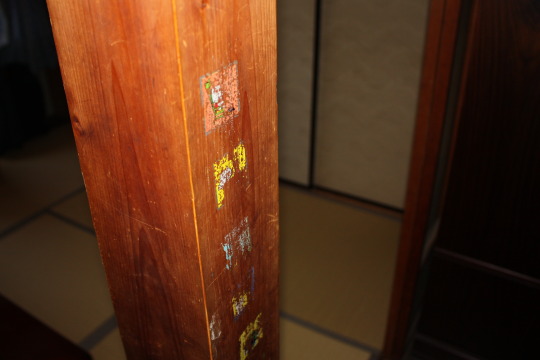
jump to the table of contents 目次のページへ
next page 次ページへ
森林鉄道と、ある酒屋の物語 16(日本語&English)
A novel, of memorable liquor store and logging railroad 16
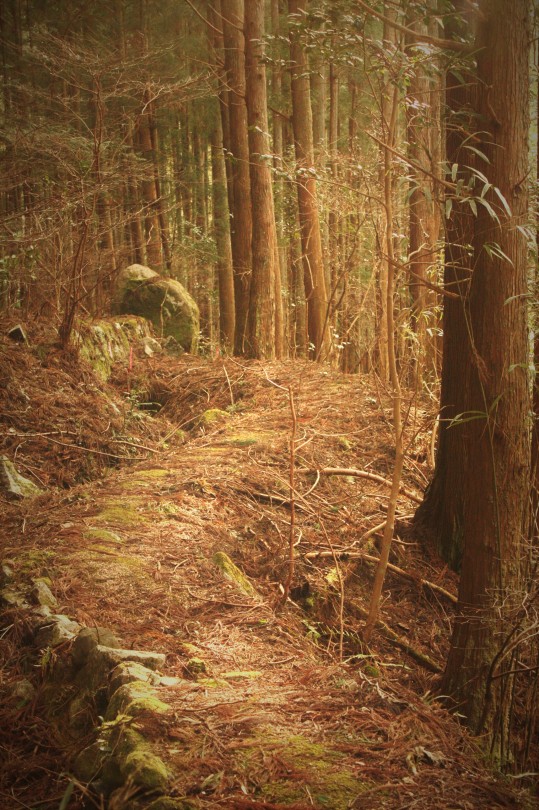
ex-railroad line 森林鉄道軌道跡
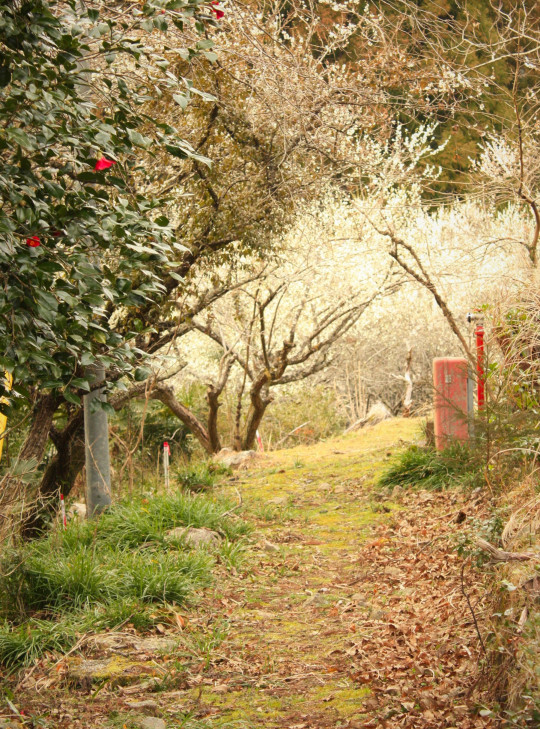
ex-railroad line 森林鉄道軌道跡
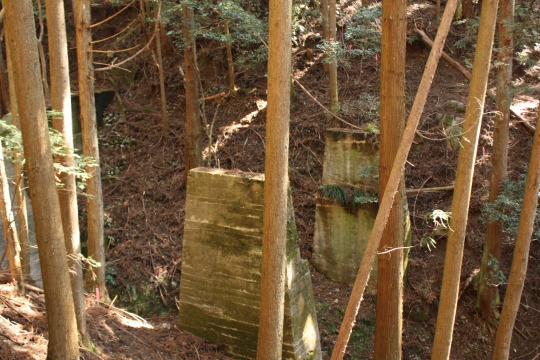
bridge pier 橋脚
田峯森林鉄道鰻澤線は昭和6年(1931)から33年(1958)まで、段戸の御料林(戦後は国有林)の木材を伐り出すのに活躍したトロッコ列車だ。ガソリンエンジン駆動の機関車が、下流の竹桑田からたくさんのトロッコを連結して、当貝津川沿いの線路を遡上してくる。トロッコ一つには一人の人間が担当としてついている。いずれも屈強な男たちだ。終着の鰻澤では、山から下りてきた丸太が待っている。列車はここで連結を解かれ、たくさんの単体トロッコとなる。フォークリフトなどの便利な機械など夢の中でも見たことのない当時、担当の者たちは己の腕力のみで丸太をトロッコに積み込んだ。積み込める丸太の大きさによって、給料の歩合が決まる。木こりたちも必死であった。単体となったトロッコに荷を積むと、あとは自由落下で竹桑田までもどって行く。つまり、動力なしのブレーキコントロールだけで、竹桑田まで「落ちて」いくのだ。このブレーキシューは木製で、1回の下り行程で3つか4つほどがすり減ってなくなる。これを作っておくのも担当者の役目で、シューを取り換え取り換えしつつ、トロッコを操るのである。
The logging railroad Unagisawa-line was at work from Showa 6 (1931) until Showa 33(1958) to convey logs from the national forest in Dando. A locomotive driven by gasoline engine pulled many wagons called ‘truck’ . It departed from the station in downstream area and went up along the river. Each truck had one rider who is in charge of it. All of them were tough men. At the terminal station Unagisawa, Logs cut down in the deep mountain waited for them to arrive. Here train was separated into wagons. As the riders did’t have such machines as fork lift each man lifted up those logs onto his wagon and load them only by his thick arms. Their wage was percentage pay. The more they transported wood the much money they were able to get. So they worked hard and hard. Then they got on his separated wagon heading to downstream. This time the wagon had no motive power. It was moved by free fall until downstream station. They controlled its moving by brake. To prepare the brake shoe was also their important job. It was made of wood. They made them and set them to the wagon. Three or four brake shoes would wear out per one descent travel.
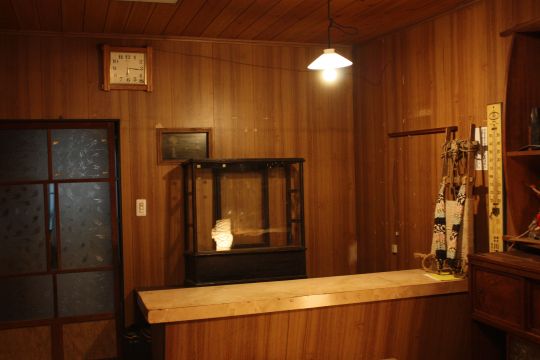
Chikakosan’s place
ちか子さんは、店番をしつつこれらの音を聞くのが好きだった。ガソリンエンジンの音、軌間762mmの軌道と輪のこすれあう音、ブレーキシューのすり減っていく悲鳴のような音。伊藤屋酒店のカウンターに座っていると、南からエンジンの音が近づいてくる。線路は、伊藤屋の近所の営林署官舎のあたりで東に大きくカーブを切っている。カーブを切り、しばらく栗島川に沿って遡上するのだ。伊藤屋から見れば森の奥に遠ざかっていく形になるので、音がだんだんと小さくなっていく。と、がたんがたんと橋で渡河する音が聞こえる。栗島川を渡った線路は、またこの川に沿って下ってくるので、伊藤屋に近づいてくることになる。そして、木の間がくれに列車の姿をみることもできる。森林鉄道の音は、ちか子さんにとって日々の楽しみの一つであった。
Chikako-san loved to hear the sounds of logging railroad in her liquor store. The sound of gasoline engine, the friction rub given off by rails and wheels, the sound like scream from brake shoes, and so on. Behind the counter she heard engine sound getting closer . It came from the south , that is, from downstream area. The rail turned to the east near her shop. So the sound became more distant and more faint. But soon it turned back to her place. In the depth of forest the rail went across the river by wooden bridge, and turned its direction to the west, toward her shop. And in the shade of trees on the cliff she was able to catch sight of train turning the direction again. This time it went to the north, heading deep mountain area. As it went, then the sounds got faint again.
The sounds of logging railroad was her great amusement in her daily life.
Stunning handpainted [antique] blue and white Japanese porcelain plate. It is estimated to be from the Late Taisho-Early Showa period, circa 1920s. Adorned with a graceful pattern of stylized Kikumon (chrysanthemum) and waves. The mark on the underside indicates the name of shop (not listed in any references that I checked). It was likely produced in Seto.
Post link
Actress/dancer Ashita Matsuko, at the Moulin Rouge Theater Shinjuku
From left to right are 伏見愛子 Fushimi Aiko, actor/film director 小崎政房 Ozaki Masafusa, 明日待子 Ashita Matsuko, and actress 望月優子 Mochizuki Yūko.
1935
Post link
明日待子
Ashita Matsuko (1920 - )
Ashita Matsuko is a former popular actress and dancer during the wartime era. She was the poster girl of the Moulin Rouge theater in Shinjuku, Tokyo during the early Showa era until after the war.
During the war, the Japanese government utilized her for national policy and featured her in various war posters and publishings, including “idol” magazines published by the Army/Navy intended for soldiers on the battlefield. Many soldiers looked forward to receiving the magazine.
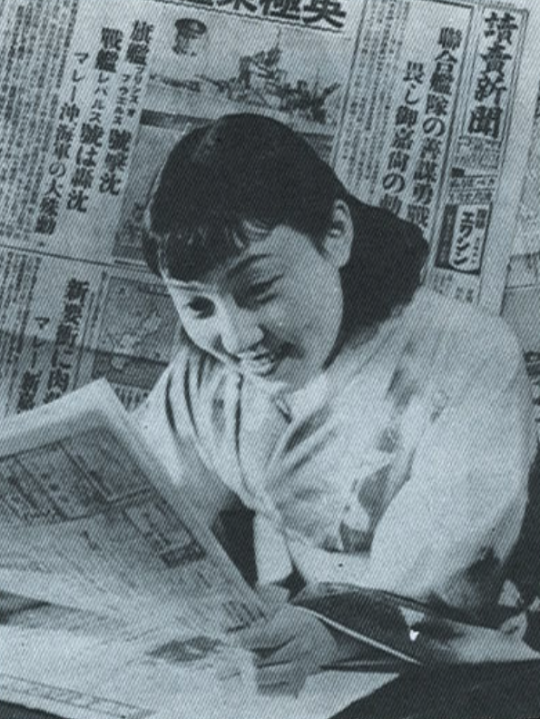
Ashita Matsuko smiling while reading a newspaper article about a naval battle in Malaya on December 10, 1941.

The first edition of the Navy-published “idol magazine” 戦線文庫 Sensen Bunko (Frontline Paperback)
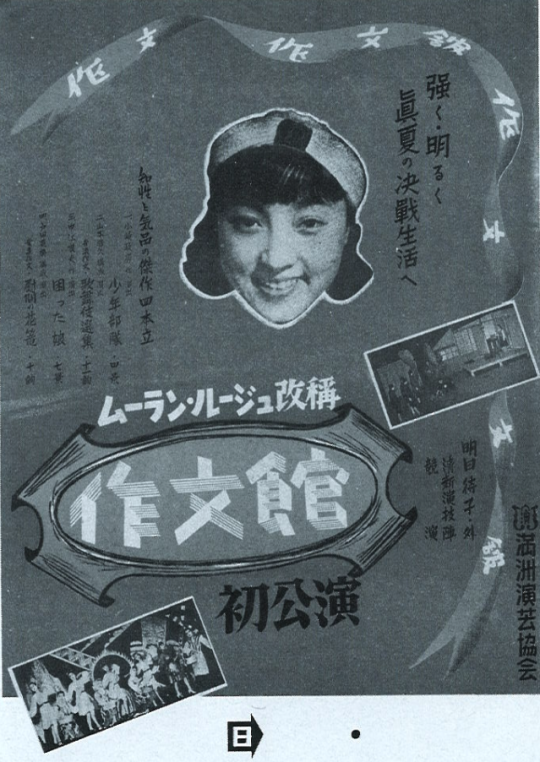
Poster for a performance in Manchuria.

Here’s how she looks like now at the age of 97.
Post link
戦時中アイドル 明日待子
Wartime-era idol, Ashita Matsuko (1920 - )
Ashita Matsuko is a former popular actress and dancer during the wartime era. She was the poster girl of the Moulin Rouge theater in Shinjuku, Tokyo during the early Showa era until after the war.
Post link

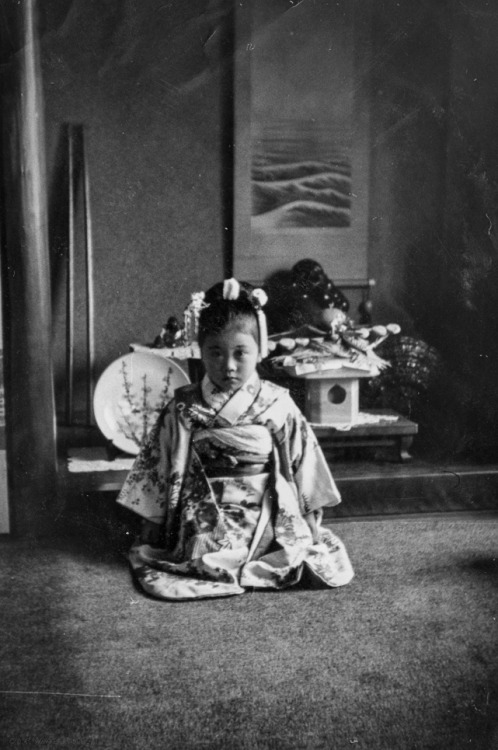



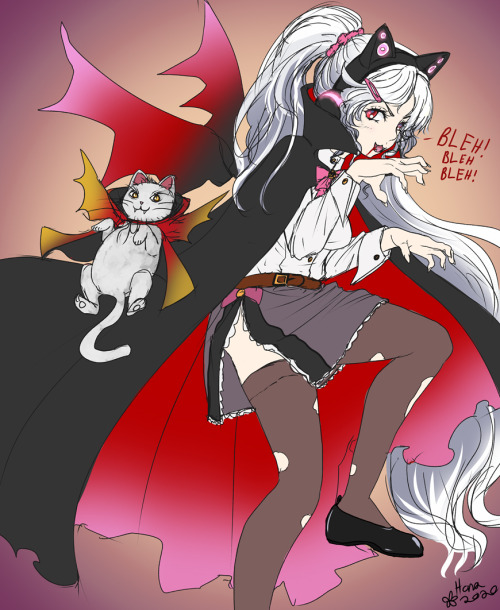


![Stunning handpainted [antique] blue and white Japanese porcelain plate. It is estimated to be from t Stunning handpainted [antique] blue and white Japanese porcelain plate. It is estimated to be from t](https://64.media.tumblr.com/f89e47ffbb124abf6786fd253b5668a5/cd7741e4d039f565-d4/s500x750/5b2496870d0938c7904f07484c4fc04f3e97e506.jpg)
